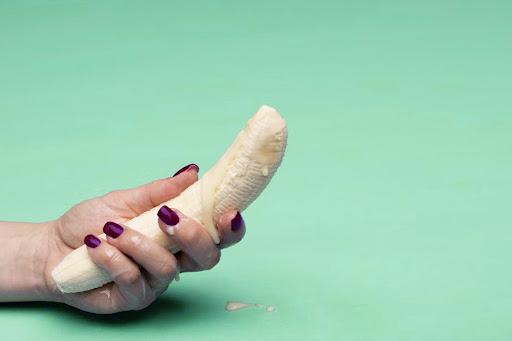There are so many birth control methods, which includes the contraceptive pill, condoms, and intrauterine devices (IUDs), the “pull out” method stands out as an unconventional approach to preventing pregnancy. It hinges on the idea that, before ejaculation, a man withdraws his penis from a woman’s vagina. While some may consider it a viable option, there is ongoing debate about its effectiveness. In this article, we will explore the pull out method, discussing its potential for preventing pregnancy, its limitations, and how it relates to sexually transmitted infections (STIs). If you want to know more about sex health knowledge, welcome to our website to see more related articles.
Table of Contents
Understanding the Pull Out Method
The pull out method, scientifically known as “coitus interruptus” or simply “withdrawal,” involves a man withdrawing his penis from the woman’s vagina just before ejaculation. The concept is to prevent sperm from entering the vagina, in order to reduce the risk of pregnancy. However, the success of this method depends heavily on precise timing and self-control, making it a somewhat unreliable or challenging choice for many couples.
An essential aspect of the pull out method is that it requires a high degree of control to withdraw the penis at the correct moment. Some men may not accurately gauge their proximity to orgasm during the heat of the moment, increasing the risk of unintended pregnancy. Therefore, for those who opt for the pull out method, it is safer when practiced within a trusting relationship.
In practice, a man must possess the ability to control the timing of his ejaculation accurately. It’s also crucial for both partners to undergo testing for sexually transmitted infections (STIs) to ensure that they are engaging in a healthy and safe sexual relationship. To enhance the method’s reliability, couples may consider combining it with another form of birth control, such as the contraceptive pill or spermicide (a chemical that kills sperm). Additionally, women can track their menstrual cycle and avoid using the pull-out method during their most fertile days.
Effectiveness of the Pull Out Method
Can the pull-out method prevent pregnancy? The short answer is yes, but it comes with significant caveats. Whether a woman is ovulating or not, the risk of pregnancy persists due to the potential lifespan of sperm within the female reproductive tract. Even when perfectly executed, this method is not foolproof.
When done correctly, the pull-out method is believed to be around 96 percent effective. This means that in perfect circumstances, four out of every 100 women using this method will become pregnant. However, when not done perfectly, approximately 22 out of every 100 women (on average) who use this method will become pregnant, equating to roughly one in five women.
Moreover, even after the first sexual encounter, sperm may remain in the penis, on the penis, or on the hands. Consequently, washing the penis and hands before any subsequent sexual activities is advisable to minimize the risk further.
Additionally, it’s worth noting that pre-ejaculate, or pre-cum, does not inherently contain sperm. Still, sperm can inadvertently mix with it as it travels down the urethra, potentially carrying remnants from previous ejaculations. Consequently, sperm could be present in pre-cum before the release of semen, potentially increasing the risk of pregnancy.
STI Prevention and the Pull Out Method
Unfortunately, the pull-out method does not provide protection against sexually transmitted infections (STIs) and HIV. Many STIs spread through skin-to-skin contact, and opting for the pull-out method without using a condom places individuals at risk of contracting or transmitting such infections.
What’s more, it’s essential to understand that some STIs, including chlamydia, syphilis, and gonorrhea, can be carried in pre-cum. If the pull-out method is your sole choice of birth control, it is highly recommended to use condoms until both partners feel confident in their ability to practice it perfectly.
Benefits of the Pull Out Method
Despite its challenges and limitations, the pull-out method does have some benefits. For those who choose this approach, precision and mindfulness are of utmost importance.
The advantages of the pull-out method include:
1.Convenience: It can be more convenient for both partners.
No Medical or Hormonal Side Effects: It does not cause any reported medical or hormonal side effects.
2.Cost-Effective: It doesn’t require a doctor’s visit or medication, saving both time and money.
3.Alternative for Personal, Religious, or Medical Reasons: It can be an alternative for those who cannot or prefer not to use other forms of birth control due to personal, religious, or medical reasons.
Risks of the Pull Out Method
As with any contraceptive method, there are risks associated with the pull-out method. These include:
1.Difficulty in Timing: It can be challenging to withdraw in time for various reasons, including the intensity of the moment, delayed recognition of impending orgasm, or changing one’s mind during intercourse.
2.Not Suitable for Premature Ejaculation: The method is not recommended for individuals who experience premature ejaculation, as they may ejaculate before they intend to.
3.Requires Self-Control: A high level of self-control is necessary, and both partners must be committed to withdrawing at the right moment.
4.Limited Control for Women: Women have no control over this method, and its success relies entirely on the man’s self-control.
5.Potential Disruption of Sexual Pleasure: The pull-out method may disrupt or diminish sexual pleasure for some individuals.
6.Ineffective Against STIs and HIV: It does not provide protection against sexually transmitted infections or HIV.
When the Pull Out Method Fails: What to Do

If you have used the pull-out method and suspect that it may have failed, it’s essential not to panic. Taking immediate action can help mitigate the risk of pregnancy.
Here are steps to take if you believe the pull-out method has failed:
1.Bearing Down: Go to the bathroom and sit on the toilet, bearing down. Use your vaginal muscles to help expel any ejaculate that may be inside you.
2.Urinate: Urinate as soon as possible after intercourse to help remove semen outside your vaginal opening.
3.Thorough Hygiene: Wash your vaginal area thoroughly.
Additionally, you may consider:
4.Emergency Contraceptive Pill: Take the emergency contraceptive pill (the morning-after pill) as close to the time of intercourse as possible. There is a 72-hour window in which this pill is effective after sex, with earlier use being more effective.
5.Pregnancy Test: If you experience a missed period, consider taking a pregnancy test. These tests are typically reliable from the first day of a missed period.
Conclusion
In conclusion, while the pull-out method is recognized as a form of birth control, it is far from the most effective option available. Choosing this method should be a mutual decision between partners, contingent upon trust and a high degree of self-control. As with any contraception, it’s essential to understand both its advantages and limitations before making an informed choice about its suitability.

